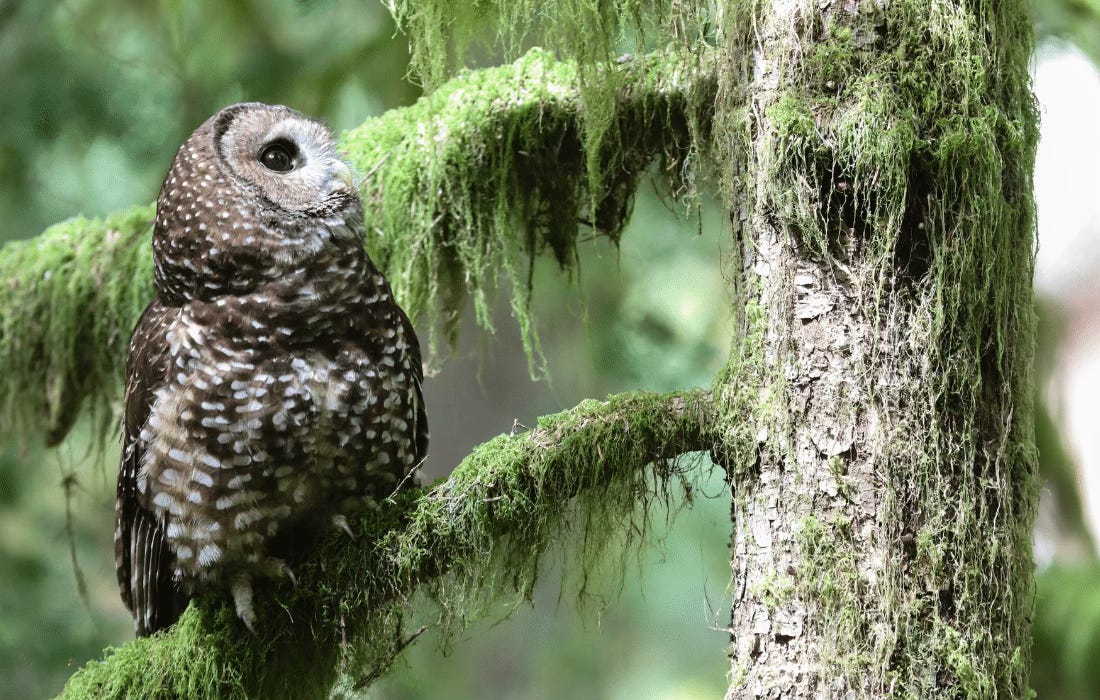The dire wolves that weren't
How one company's publicity stunt became a weapon against endangered species protection
By Dan Fletcher
This Friday edition of our sister publication, Pazi’s Pallas, is free to everyone! If you’ve been missing manuls lately on FUZZ, check out Pazi’s visit to North Dakota, where he met Kai, a blind manul who’s remarkably capable of navigating through sound.
Last month, Colossal Biosciences announced they had achieved something extraordinary: the world's first "de-extinction," bringing back the dire wolf after 12,000 years. The internet exploded, and media outlets ran breathless headlines about resurrected species, led by a TIME Magazine cover story.
There was just one problem. It wasn't true.
Now, in a total about-face, Colossal's chief scientist Beth Shapiro has quietly admitted what independent scientists said from the beginning — they didn't resurrect dire wolves at all. They made three modified gray wolves with white coats, named them after Game of Thrones characters, and called it a day.
"It's not possible to bring something back that is identical to a species that used to be alive," Shapiro told New Scientist this week, a publication that did an excellent job dogging the company into a more accurate frame. "Our animals are grey wolves with 20 edits that are cloned."
This might seem like just another case of a biotech company overselling its achievements. And TIME Magazine deserves some scorn for the overly credulous story they ran, too. But the fallout has been far more dangerous than misleading headlines. Within hours of Colossal's announcement, the Trump administration seized on the news to argue that fears about endangered species are overblown — and that existing protections should be weakened.
Secretary of Interior Doug Burgum claimed the "revival of the Dire Wolf" represented "the advent of a thrilling new era of scientific wonder, showcasing how the concept of 'de-extinction' can serve as a bedrock for modern species conservation." At a town hall days later, he doubled down: "If we're going to be in anguish about losing a species, now we have an opportunity to bring them back. Pick your favorite species and call up Colossal."
It's a breathtaking leap of logic on top of a mountain of shaky hype. Even if Colossal had actually resurrected dire wolves — which, again, they didn't — what good would that do for species facing extinction today? Dire wolves vanished 12,000 years ago because their world disappeared. The massive prey they hunted, the ecosystems they inhabited, the climate they evolved for — all gone. You can't resurrect a species and plop it into suburban Denver.
But the real wolves still living among us? They're struggling. Despite their evolutionary success and ecological importance, gray wolves remain under constant pressure from habitat loss, hunting, and human intolerance. Colorado's own wolf reintroduction program has faced death threats and political opposition. Montana and Idaho have dramatically expanded wolf hunting quotas. Just last month, Congress considered legislation that would strip wolves of federal protection entirely.
"Add up the intolerance for living wolves, why would this nation ever want to resurrect extinct species?" wolf expert Carter Niemeyer asked AFP.
The whole episode reveals how easily genuine scientific advances can be weaponized against conservation. Colossal's gene-editing work is legitimately impressive — inserting dire wolf genes into gray wolf embryos and successfully birthing healthy cubs represents real technological progress. But calling it "de-extinction" isn't just misleading marketing. It provides political cover for those who want to gut the policies that actually protect endangered species.
The most maddening part? Even Shapiro seems to understand this danger. "Now it's suddenly tied to this idea that we don't have to care. It's terrible," she told New Scientist. But "suddenly" suggests she's surprised by this outcome, when conservation scientists have been warning about exactly this risk for years. Colossal's own website claims "Extinction is a colossal problem facing the world... The solution is de-extinction."
The three cubs at the center of this controversy — Romulus, Remus, and Khaleesi — will live their entire lives in captivity, fed by humans, with no connection to wild ecosystems. They're not dire wolves. They're impressive scientific achievements being used to justify terrible policy.
Real conservation is happening every day, but it's not sexy enough for viral headlines. It's researchers like Vadim Kirilyuk spending decades monitoring manuls across Mongolia's steppe. It's community groups building beehive fences to protect both elephants and farmers. It's rangers like Mark Kaptein removing 500 snares a week from African reserves. It's local communities choosing to coexist with lynx in Estonia rather than hunt them to extinction.
None of these efforts promise to resurrect the dead. They're focused on something far more practical and urgent: keeping the living alive. And they deserve our support, our funding, and our protection — not to play second fiddle to a publicity stunt gone wrong.'
Quick links! 🔗
Speaking of weakening species protections, the timber industry is waging its own legal battle against the Endangered Species Act. The American Forest Resource Council is suing to remove protections from 3.5 million acres of northern spotted owl habitat, arguing that wildfires and forest succession have made these lands unsuitable for the birds. "The science tells us that the greatest risk in the survival of the Northern spotted Owl is competition with the barred owl and catastrophic wildfire. It is not logging," the industry group's Nick Smith told Redwood TV.
But EPIC, an environmental law organization defending the owls, argues these forests remain critical habitat that prevents genetic bottlenecks in an already declining species. "This is just another attempt by the timber industry to take public lands and effectively privatize them for their own profit," says EPIC's Tom Wheeler.

And finally, I’d love to see a bobcat! I spend most evenings scanning my backyard with thermal binoculars, hoping to catch a glimpse of the bobcats I know prowl these Colorado foothills. So it's doubly maddening to see this Reddit video from Yosemite, where tourists witness an incredible bobcat hunting but can't be bothered to look up from their phones to actually watch it unfold. Sometimes the most extraordinary wildlife encounters might be happening right in front of us, if we just look up.
Some day, bobcats. Have a great Memorial Day weekend — we’ll be off Monday for the holiday and then back in your inboxes on Wednesday.






Very informative, thank you.